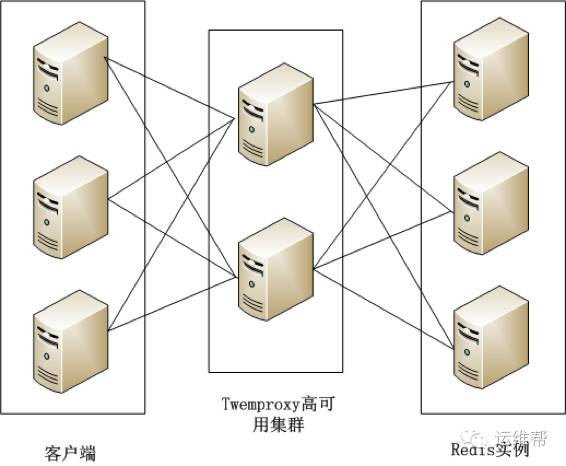 Operation and Maintenance
Operation and Maintenance
 Linux Operation and Maintenance
Linux Operation and Maintenance
 Summary of what you need to pay attention to about Nginx
Summary of what you need to pay attention to about Nginx
Summary of what you need to pay attention to about Nginx
nginx parameter tuning worker_processes 3; //The number of cpu cores -1, the effect is better when used #worker_processes 4;#worker_cpu_affinity 0001 0010 0100 1000;#error_log logs/error.log;#error_log logs/error.log notice;#error_log logs/error.log info;#pid logs/nginx.pid;events { use epoll; worker_connections 8192; } http { include &
1. Detailed introduction to parameter tuning

##Introduction: nginx parameter tuning worker_processes 3; //The number of cpu cores is -1, and the effect is better when used #worker_processes 4; #worker_cpu_affinity 0001 0010 0100 1000; #error_log logs/error.log; #error_log logs/error. log notice;#error_log logs/error.log...
2. Detailed introduction to cross-domain settings

Introduction: When working on a project, a structural design with front-end and back-end separation was adopted. The rest-style http interface designed in the background needs to satisfy both background service calls and It also needs to be satisfied that the front-end directly uses ajax calls, so cross-domain problems are encountered. The back-end uses the spring mvc structure. The HTTP method supports get, post, put, delete, option and other methods. Because when the post is called, the front-end http will first Use option to the server, and then submit the request data after 204, except at the nginx level...
3. 10 recommended articles about cluster deployment

Introduction: This article mainly introduces Linux server cluster deployment: nginx configuration, for students who are interested in PHP tutorials You can refer to it.
4. 10 recommended articles about the php chroot() function

5.
About ZKEACMS Detailed introduction

6.
Detailed introduction to configuring the website

7.
Summary of the detailed introduction of the connection status
Introduction: Check the number of concurrent connections and connection status of Nginx, etc. under Linux. 1. Check the number of concurrent requests of the Web server (Nginx Apache) and its TCP connection status: netstat -n | awk '/^tcp/ {++S[$NF]} END {for(a in S) print a,&n Introduction: Check the number of concurrent connections and connection status of Nginx, etc. under Linux. 1. Check the number of concurrent requests of the Web server (Nginx Apache) and its TCP connection status: netstat -n | awk & 39; 9. About NGINX reverse in LINUX A detailed introduction to the TOMCAT cluster under the agent ##Introduction: The editor will bring you an article below TOMCAT cluster under NGINX reverse proxy in LINUX (detailed explanation). The editor thinks it’s pretty good, so I’ll share it with you now and give it as a reference. Let’s follow the editor and take a look. 10. Detailed graphic and text explanation of Nginx installation tutorial under Linux Introduction: This article mainly introduces the installation tutorial of Nginx in Linux in detail. It has certain reference value. Interested friends can refer to it [Related Q&A recommendations]: web - nginx location search algorithm problem! ? How does nginx proxy redirect websites between multiple domain names url-rewrite - Please tell me how to modify this rewrite to be readable by nginx Code haproxy How to get the user’s real IP sent from nginx? How to verify the permissions of the upload module in nginx? 



The above is the detailed content of Summary of what you need to pay attention to about Nginx. For more information, please follow other related articles on the PHP Chinese website!

Hot AI Tools

Undresser.AI Undress
AI-powered app for creating realistic nude photos

AI Clothes Remover
Online AI tool for removing clothes from photos.

Undress AI Tool
Undress images for free

Clothoff.io
AI clothes remover

Video Face Swap
Swap faces in any video effortlessly with our completely free AI face swap tool!

Hot Article

Hot Tools

Notepad++7.3.1
Easy-to-use and free code editor

SublimeText3 Chinese version
Chinese version, very easy to use

Zend Studio 13.0.1
Powerful PHP integrated development environment

Dreamweaver CS6
Visual web development tools

SublimeText3 Mac version
God-level code editing software (SublimeText3)

Hot Topics
 1670
1670
 14
14
 1428
1428
 52
52
 1329
1329
 25
25
 1274
1274
 29
29
 1256
1256
 24
24
 Linux Architecture: Unveiling the 5 Basic Components
Apr 20, 2025 am 12:04 AM
Linux Architecture: Unveiling the 5 Basic Components
Apr 20, 2025 am 12:04 AM
The five basic components of the Linux system are: 1. Kernel, 2. System library, 3. System utilities, 4. Graphical user interface, 5. Applications. The kernel manages hardware resources, the system library provides precompiled functions, system utilities are used for system management, the GUI provides visual interaction, and applications use these components to implement functions.
 Maintenance Mode in Linux: When and Why to Use It
Apr 25, 2025 am 12:15 AM
Maintenance Mode in Linux: When and Why to Use It
Apr 25, 2025 am 12:15 AM
The timing and reasons for using Linux maintenance mode: 1) When the system starts up, 2) When performing major system updates or upgrades, 3) When performing file system maintenance. Maintenance mode provides a safe and controlled environment, ensuring operational safety and efficiency, reducing impact on users, and enhancing system security.
 Linux Operations: System Administration and Maintenance
Apr 15, 2025 am 12:10 AM
Linux Operations: System Administration and Maintenance
Apr 15, 2025 am 12:10 AM
The key steps in Linux system management and maintenance include: 1) Master the basic knowledge, such as file system structure and user management; 2) Carry out system monitoring and resource management, use top, htop and other tools; 3) Use system logs to troubleshoot, use journalctl and other tools; 4) Write automated scripts and task scheduling, use cron tools; 5) implement security management and protection, configure firewalls through iptables; 6) Carry out performance optimization and best practices, adjust kernel parameters and develop good habits.
 Linux: A Look at Its Fundamental Structure
Apr 16, 2025 am 12:01 AM
Linux: A Look at Its Fundamental Structure
Apr 16, 2025 am 12:01 AM
The basic structure of Linux includes the kernel, file system, and shell. 1) Kernel management hardware resources and use uname-r to view the version. 2) The EXT4 file system supports large files and logs and is created using mkfs.ext4. 3) Shell provides command line interaction such as Bash, and lists files using ls-l.
 Linux: How to Enter Recovery Mode (and Maintenance)
Apr 18, 2025 am 12:05 AM
Linux: How to Enter Recovery Mode (and Maintenance)
Apr 18, 2025 am 12:05 AM
The steps to enter Linux recovery mode are: 1. Restart the system and press the specific key to enter the GRUB menu; 2. Select the option with (recoverymode); 3. Select the operation in the recovery mode menu, such as fsck or root. Recovery mode allows you to start the system in single-user mode, perform file system checks and repairs, edit configuration files, and other operations to help solve system problems.
 Linux's Essential Components: Explained for Beginners
Apr 17, 2025 am 12:08 AM
Linux's Essential Components: Explained for Beginners
Apr 17, 2025 am 12:08 AM
The core components of Linux include the kernel, file system, shell and common tools. 1. The kernel manages hardware resources and provides basic services. 2. The file system organizes and stores data. 3. Shell is the interface for users to interact with the system. 4. Common tools help complete daily tasks.
 Linux: A Deep Dive into Its Fundamental Parts
Apr 21, 2025 am 12:03 AM
Linux: A Deep Dive into Its Fundamental Parts
Apr 21, 2025 am 12:03 AM
The core components of Linux include kernel, file system, shell, user and kernel space, device drivers, and performance optimization and best practices. 1) The kernel is the core of the system, managing hardware, memory and processes. 2) The file system organizes data and supports multiple types such as ext4, Btrfs and XFS. 3) Shell is the command center for users to interact with the system and supports scripting. 4) Separate user space from kernel space to ensure system stability. 5) The device driver connects the hardware to the operating system. 6) Performance optimization includes tuning system configuration and following best practices.
 Linux Operations: Utilizing the Maintenance Mode
Apr 19, 2025 am 12:08 AM
Linux Operations: Utilizing the Maintenance Mode
Apr 19, 2025 am 12:08 AM
Linux maintenance mode can be entered through the GRUB menu. The specific steps are: 1) Select the kernel in the GRUB menu and press 'e' to edit, 2) Add 'single' or '1' at the end of the 'linux' line, 3) Press Ctrl X to start. Maintenance mode provides a secure environment for tasks such as system repair, password reset and system upgrade.



